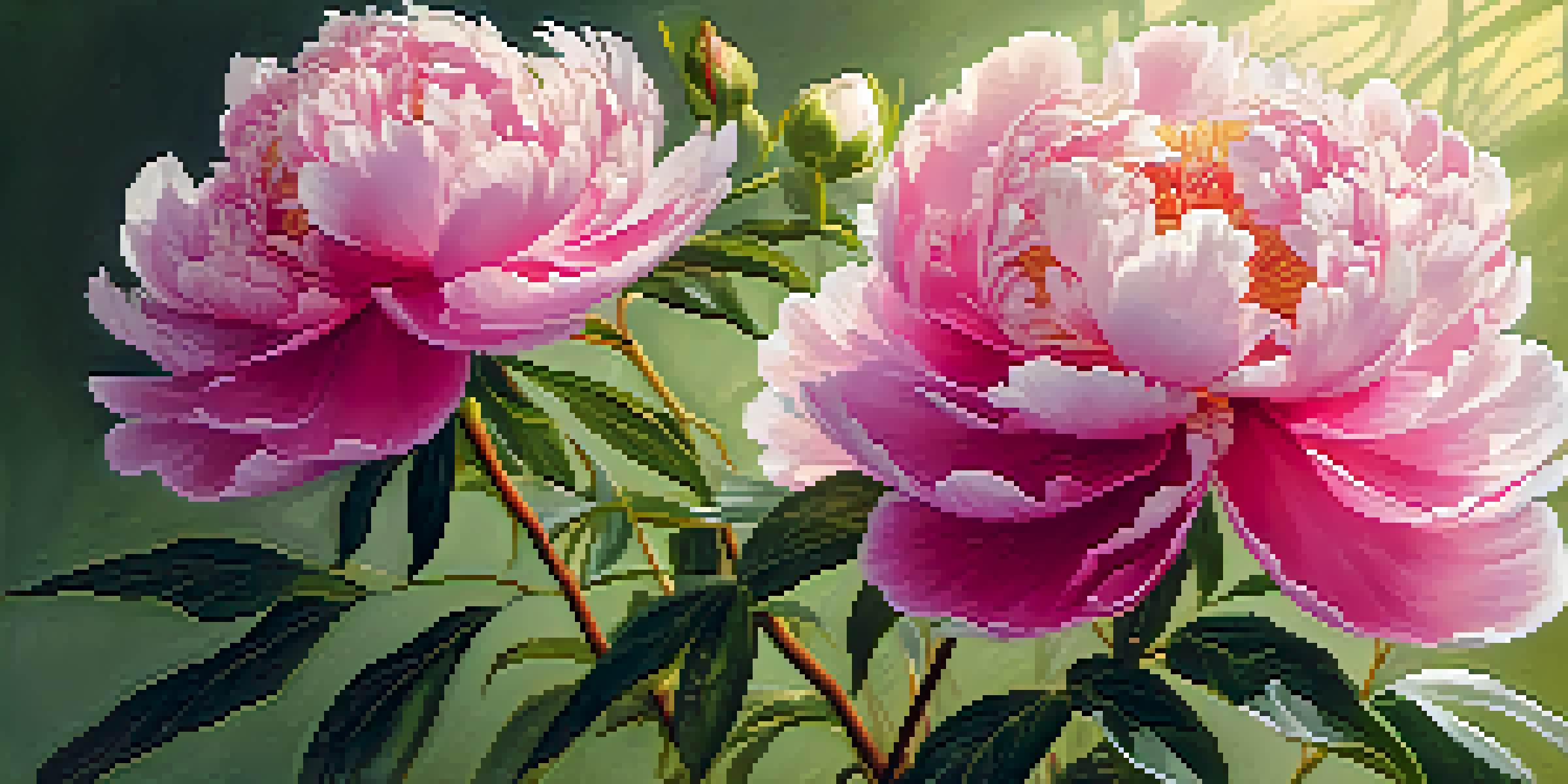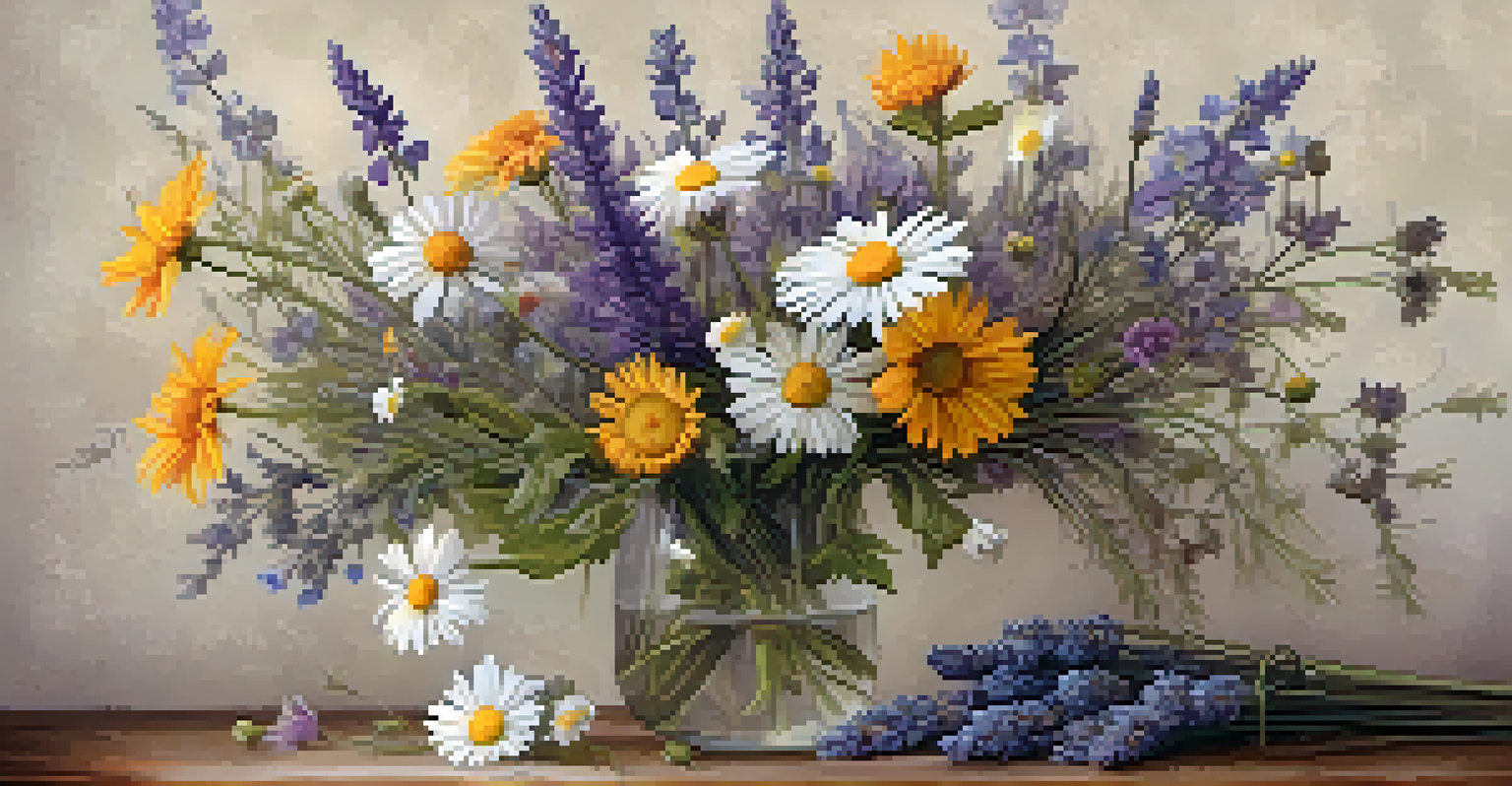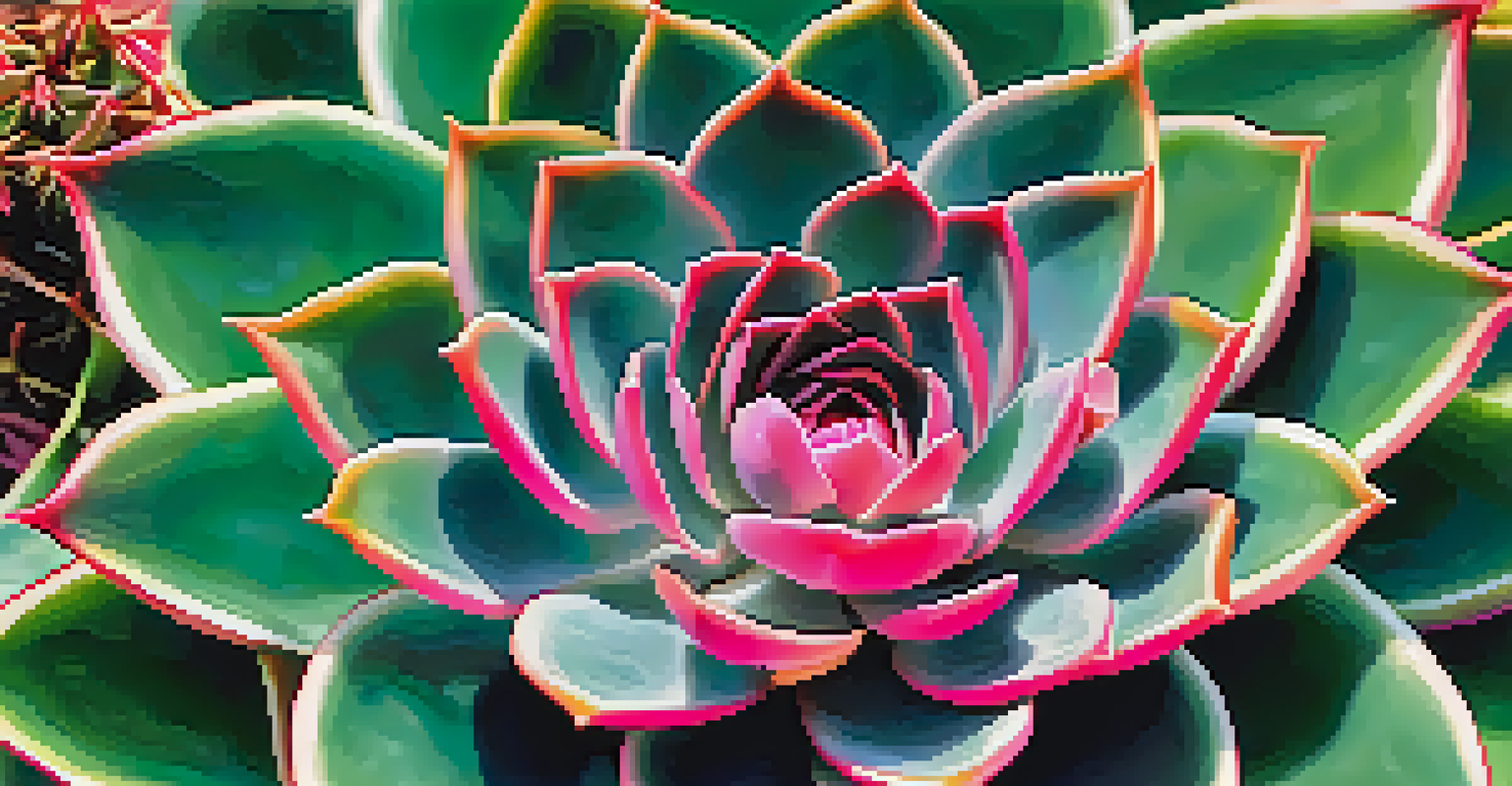Botanical Illustrations: Artistry Meets Scientific Exploration

The Rich History of Botanical Illustrations
Botanical illustrations have a storied history that dates back centuries, intertwining art and science. Artists like Pierre-Joseph Redouté and Maria Sibylla Merian brought plants to life on paper, capturing their details with remarkable accuracy. These illustrations served not just as art but as crucial resources for botanists and explorers looking to document new species. In many ways, they laid the groundwork for modern botanical science.
Botanical art is a bridge between science and beauty, revealing the hidden wonders of nature.
The Renaissance marked a significant turning point when botanical illustrations began to flourish, driven by curiosity and a desire for knowledge. With the advent of the printing press, these artworks reached a wider audience, sparking interest in botany among both scientists and the general public. This era showcased the seamless blend of creativity and scientific inquiry, setting the stage for future exploration.
As we look back at this rich history, it's clear that botanical illustrations were more than mere representations; they were essential tools for understanding biodiversity. They captured not just the beauty of plants but also their unique characteristics, which were crucial for classification and study. In this way, botanical art has always been a bridge between aesthetics and scientific exploration.
The Artistic Techniques Behind Botanical Illustrations
Creating botanical illustrations is not just about artistic flair; it involves a range of specialized techniques. Artists often use methods like watercolor, ink, and pencil to accurately depict the intricate details of plants. Each technique brings out different aspects of the subject, from the delicate petals of a flower to the rough texture of bark, showcasing the artist's skill and understanding of botanical forms.

Moreover, botanical artists must possess a deep knowledge of their subjects. This means understanding the anatomy of plants, including their structures and growth patterns. By studying their subjects in detail, artists can capture not just the visual beauty of plants but also their scientific significance, making their illustrations valuable to both art lovers and scientists alike.
Art Meets Science in Illustrations
Botanical illustrations blend artistic skill with scientific accuracy, serving as vital tools for understanding and preserving plant biodiversity.
Incorporating color theory and composition principles is also essential in this art form. Effective use of light and shadow can create depth, while color choices can evoke emotions and highlight specific features. This combination of artistic techniques and scientific knowledge results in illustrations that are both visually stunning and informative.
Botanical Illustrations as Scientific Tools
While botanical illustrations are visually appealing, they also serve as vital scientific tools. These illustrations help researchers identify and classify plant species, often serving as references during field studies. In a world where plant diversity is crucial for ecosystems, accurate representations can aid in conservation efforts and botanical research.
Illustration is the art of communicating ideas and stories through visual means, making the invisible visible.
For instance, consider the work of contemporary botanical illustrators who collaborate with scientists to document endangered species. Their detailed drawings can reveal critical information about a plant's structure and habitat, contributing significantly to conservation strategies. This partnership between art and science underscores the enduring relevance of botanical illustrations in modern research.
Additionally, these illustrations help preserve knowledge in an era of rapid environmental change. As species face threats from climate change and habitat loss, having accurate visual records becomes increasingly important. Botanical illustrations thus not only celebrate the beauty of nature but also play a crucial role in conserving it.
The Role of Technology in Botanical Illustration
With advances in technology, the field of botanical illustration has evolved significantly. Digital tools now allow artists to create detailed illustrations with precision and ease, expanding the possibilities of this art form. Software like Adobe Illustrator and Procreate enables artists to experiment with colors and textures that may have been challenging to achieve with traditional methods.
Moreover, technology facilitates collaboration between artists and scientists in unprecedented ways. High-resolution imaging and 3D modeling can enhance the accuracy of illustrations, allowing for a deeper understanding of plant structures. This integration of technology not only improves the quality of botanical art but also enhances its scientific value.
Technology Enhances Botanical Art
Advancements in digital tools allow contemporary artists to create precise and vibrant botanical illustrations while maintaining traditional techniques.
However, despite these technological advancements, many artists still choose to embrace traditional methods. The tactile nature of working with physical materials can lead to unique outcomes that digital tools may not replicate. This blend of old and new techniques reflects the ongoing evolution of botanical illustration, proving that both artistry and scientific exploration continue to thrive.
Contemporary Botanical Illustrators to Watch
The world of botanical illustration is teeming with talented contemporary artists who are pushing the boundaries of this ancient craft. Artists like Anna Atkins, known for her cyanotype prints, and Rebecca Smith, who combines traditional techniques with modern themes, are prime examples of how botanical art is evolving. Their work not only showcases the beauty of plants but also addresses pressing environmental issues.
Another notable artist is Lisa Congdon, whose colorful and whimsical illustrations have garnered attention for their unique style. By blending playful elements with botanical subjects, she appeals to a broad audience and encourages a deeper appreciation for plant life. These artists illustrate how botanical illustrations can be both a celebration of nature and a commentary on contemporary challenges.
As you explore the work of these contemporary illustrators, you’ll find a rich tapestry of styles and messages. Each artist brings their perspective, enriching the landscape of botanical art and reminding us of the importance of plants in our lives. The future of botanical illustration is bright, with new voices and ideas continuing to emerge.
The Cultural Significance of Botanical Illustrations
Botanical illustrations hold cultural significance beyond their scientific value; they often reflect the societal values and aesthetics of their time. In various cultures, plants have been symbols of beauty, health, and spirituality. Illustrations that capture these plants can evoke a sense of nostalgia, connecting viewers to their cultural roots and traditions.
For instance, in many indigenous cultures, plants are more than mere subjects; they embody stories and histories. Botanical illustrations serve as a medium for storytelling, preserving traditional knowledge about plant uses in medicine and ceremonies. This cultural aspect adds layers of meaning to the art form, reinforcing the bond between people and nature.
Cultural and Environmental Impact
Botanical illustrations reflect cultural significance and are increasingly used to advocate for environmental conservation and awareness.
Moreover, as global awareness of environmental issues grows, botanical illustrations are increasingly used to advocate for conservation. Artists often focus on endangered species, raising awareness about the need to protect these plants and their habitats. In this way, botanical illustrations transcend art; they become powerful tools for cultural expression and environmental activism.
How to Appreciate Botanical Illustrations Today
Appreciating botanical illustrations today can be as simple as visiting a local art gallery or exploring online collections. Many museums and botanical gardens showcase these artworks, allowing visitors to immerse themselves in the beauty and intricacy of plant life. Engaging with these pieces can deepen your understanding of both art and nature.
Additionally, consider following contemporary botanical artists on social media platforms. Many artists share their process, from initial sketches to finished pieces, giving viewers a behind-the-scenes look at their work. This interaction not only fosters appreciation but also encourages conversations about the importance of plants and biodiversity.

Finally, don’t hesitate to try your hand at botanical illustration. Whether through a formal class or a casual drawing session in your backyard, capturing the beauty of plants can be a fulfilling experience. By engaging with this art form, you contribute to the ongoing legacy of botanical illustrations, celebrating the intersection of artistry and scientific exploration.